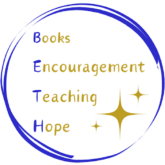First of all, I’m also over at Rena Traxel’s blog today, in an interview about my “other life” as a hymn lyricist. Please check it out!
Now, back to Ground Plan. No, I haven’t suddenly switched to landscaping terminology.
A ground plan is a drawing of a theatrical stage as viewed from above. A set designer uses such a plan to work out where to place all the necessary elements of the stage set prior to building the set and physically dragging the furniture around.
This blog post from the Vermont Stage Company gives a fascinating look at how set/scenic designer and director work together using ground plan, mock-up scale model, blocked-out rehearsal space, and finally set design in the theatre itself, to make a play come to life.
A ground plan is a useful tool in writing, as well. It isn’t as necessary in a stand-alone picture book, but it can be very helpful when writing a novel or series of novels, so that the writer can keep track of the layout of major buildings, such as the main character’s home or school or place of work. It can be used to map out a town, real or fictional. Some authors include such ground plans in their books, often as maps of a new world in a fantasy, or the street plan of a fictitious town or city.
I have mapped out an entire English village on a bend in the Thames where no village exists. It won’t find its way into any of my books, but it’s a helpful tool for me, as either major or minor characters from a middle grade series and two unrelated adult novels that I’m writing all make their home in my fictional village.
Have you ever used a Ground Plan or some equivalent in your writing?



Great idea. I will try to make a ground plan for my next book. Thanks!
Super! Good to hear. Thanks, Darlene!
This is a new concept to me, Beth, but I can see how it could be useful as we develop our PB plot…thanks for the post!
You’re welcome, Jarm.
No, I never have–at least not yet. Mine would probably end up being star charts, since I write Science Fiction. 🙂
The Golden Eagle
The Eagle’s Aerial Perspective
A star chart would be cool!
I’m lacking in the – ahem – drawing side of things. I can make a mean stick figure though 🙂
However, for a fantasy novel I worked on, I had to sketch out my major cities, mountain ranges, notable landmarks and buildings, including a compass so that as I wrote out my characters’s adventures, I made sure to mention the proper direction they headed in to get to various locations. Very helpful when I handed my pathetic version over to a bud who turned it into something beautiful.
A friend and I are working on a novel project right now, and she’s drawing a map and doing all sorts of research. It’s fascinating to watch her process! So I can understand your need to sketch everything out for your fantasy novel.
interesting term. i’ve never heard it even though i used to be quite a thespian in my younger days. i DID however, ascribe to the notion of backstory and when i acted i gave myself a whole history that helped me work through the play i was doing.
i think i still do it, although i’m neither an actor or a creative writer.
Thanks for visiting, Pammypam! I’m definitely all for creating backstory for characters, whether acted or written. I’m currently working on the backstory for the characters in my current writing project. Interesting stuff!
Your blog is a delight.
Excellent post! Thanks for the aerial perspective. I;’m going to use this method.
Great! Thanks for visiting!
Oh my! A few years ago, I drew where my YA character travelled when she went to LA..lol. Never thought about doing it again since.
How cool you mapped out a whole English village! A penciled drawing would be great in the back of the book.
It can be a helpful exercise, especially when one is “inventing” a place.